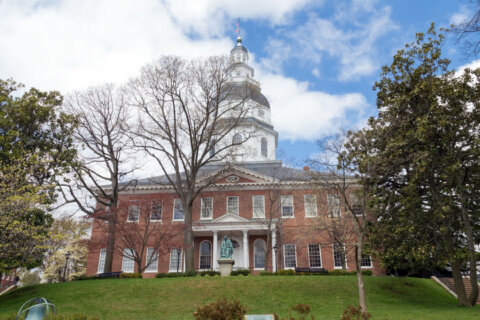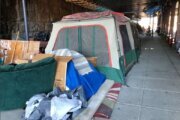DARLINGTON, Md. (AP) — Maryland Gov. Larry Hogan says the state will dredge sediment trapped behind a Susquehanna River dam to see whether the work improves the health of the Chesapeake Bay.
The Baltimore Sun reported Tuesday that the test project will determine whether dredging on a large scale will make a difference.
Hogan said the state will ask companies this month for dredging proposals. The test project would be done this winter.
The Hogan administration has been focusing on ways to reduce bay pollution that comes by way of the Conowingo Dam.
Lower Susquehanna riverkeeper Ted Evgeniadis said the Conowingo Dam was built in 1928, and the sediment that has been trapped at the site of the hydroelectric plant has been a frequent source of concern: “There was a study back in 2010 that said that the dam would reach full capacity by 2025.”
Don Boesch, president of the University of Maryland Center of Environmental Science, said, “In the last 10 years, it’s filled up faster than we originally thought, so it’s made the problem more urgent.”
Boesch says dredging alone can’t be the solution to curbing pollutants in the Chesapeake Bay: “We have to also deal with the original sources of the nutrients that come from up in the basin.”
The Susquehanna River originates in New York, and Boesch said dealing with pollutants in the river and the sediment trapped at the Conowingo Dam is the responsibility of all the states in the Chesapeake Bay watershed. In particular, he cited “the need for the upstream states, Pennsylvania and New York — which are kind of behind schedule in lowering their pollution loads — to take this seriously and pick up the pace” of waterway cleanup.
Hogan didn’t say how much the demonstration project would cost. Evgeniadis said the cost of dredging has been estimated at anywhere between $100 million to $250 million — “It’s a pretty large project.”
Part of the governor’s plan for dredging the dam includes finding a market for the dredged material. Possible uses could include the use of sediment in materials for road fill or even home countertops.
As for the benefits of alleviating the accumulation of the sediment, Evgeniadis said, “Getting that sediment out of there would do wonders for the bay.”
The Susquehanna River provides about half of the bay’s fresh water. It also accounts for about half of the bay’s nitrogen pollution, as well as about a quarter of its phosphorous and sediment pollution.
WTOP’s Kate Ryan contributed to this report.
.
___
Information from: The Baltimore Sun, http://www.baltimoresun.com
Copyright © 2025 The Associated Press. All rights reserved. This material may not be published, broadcast, written or redistributed.









